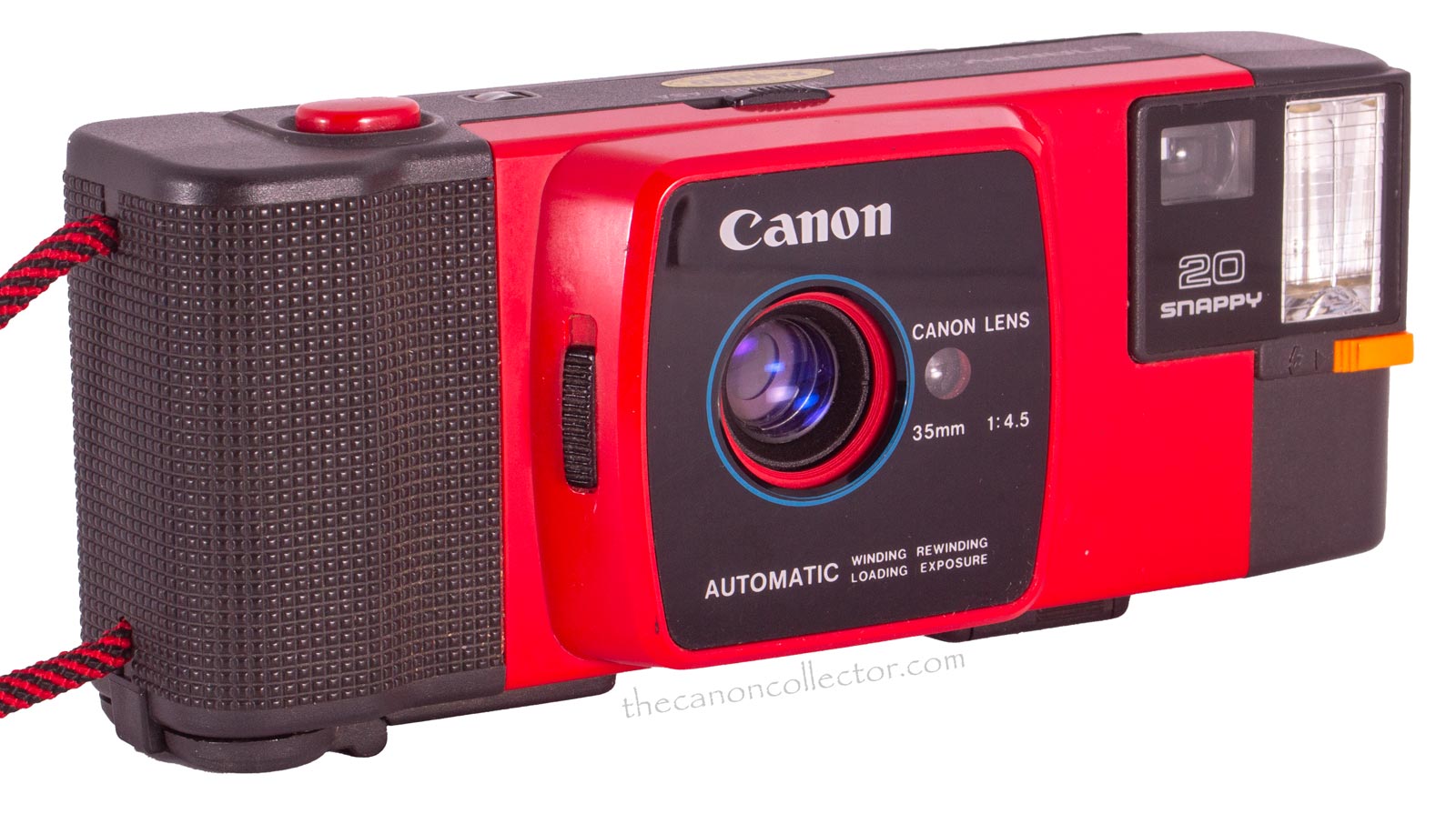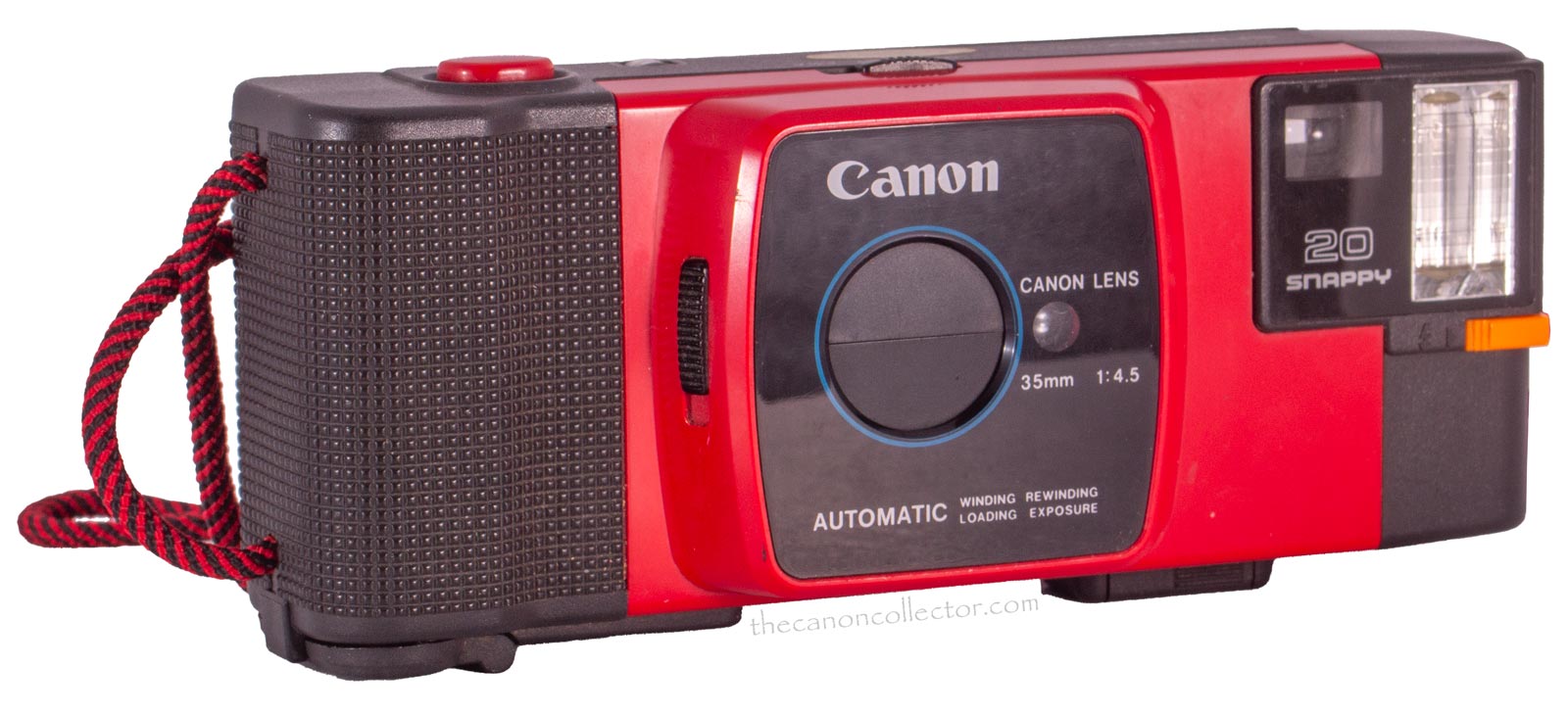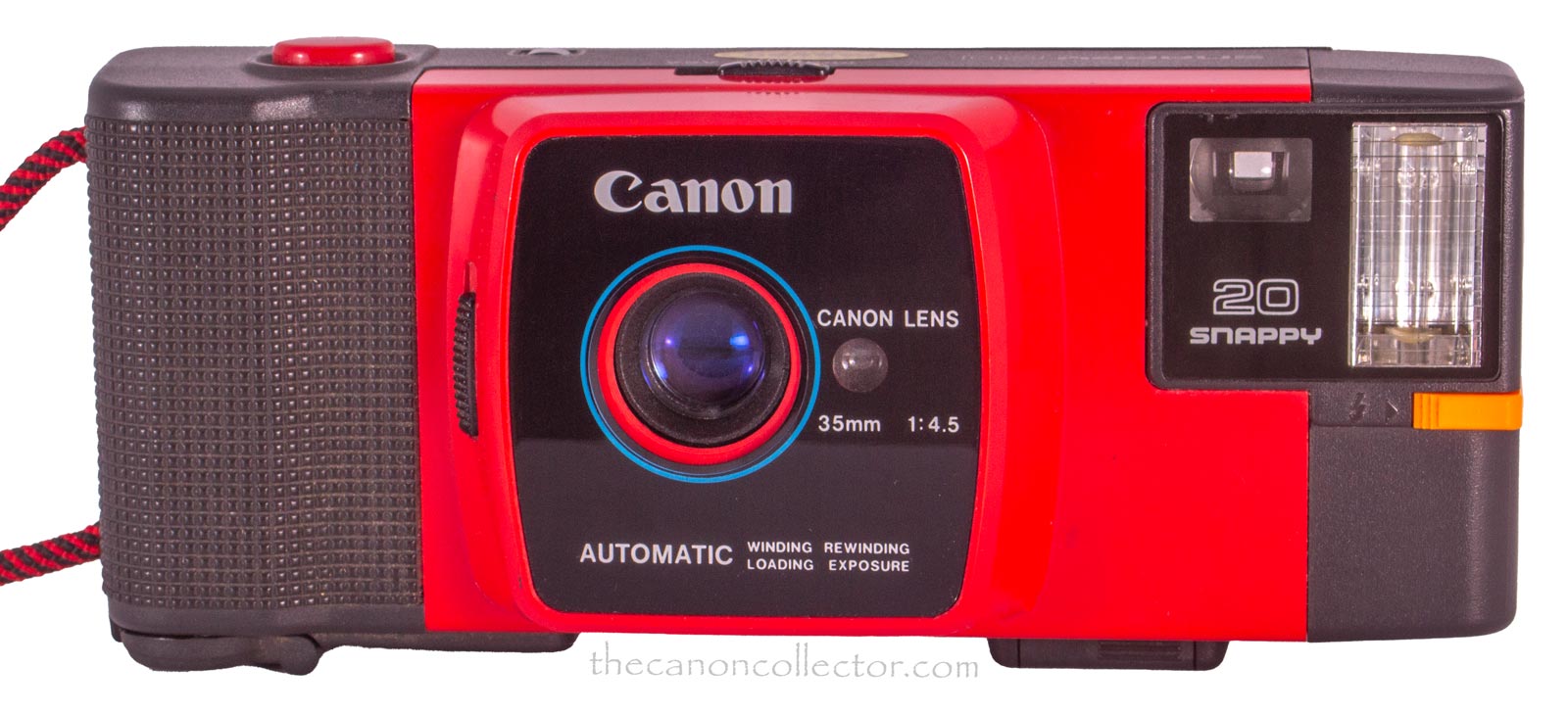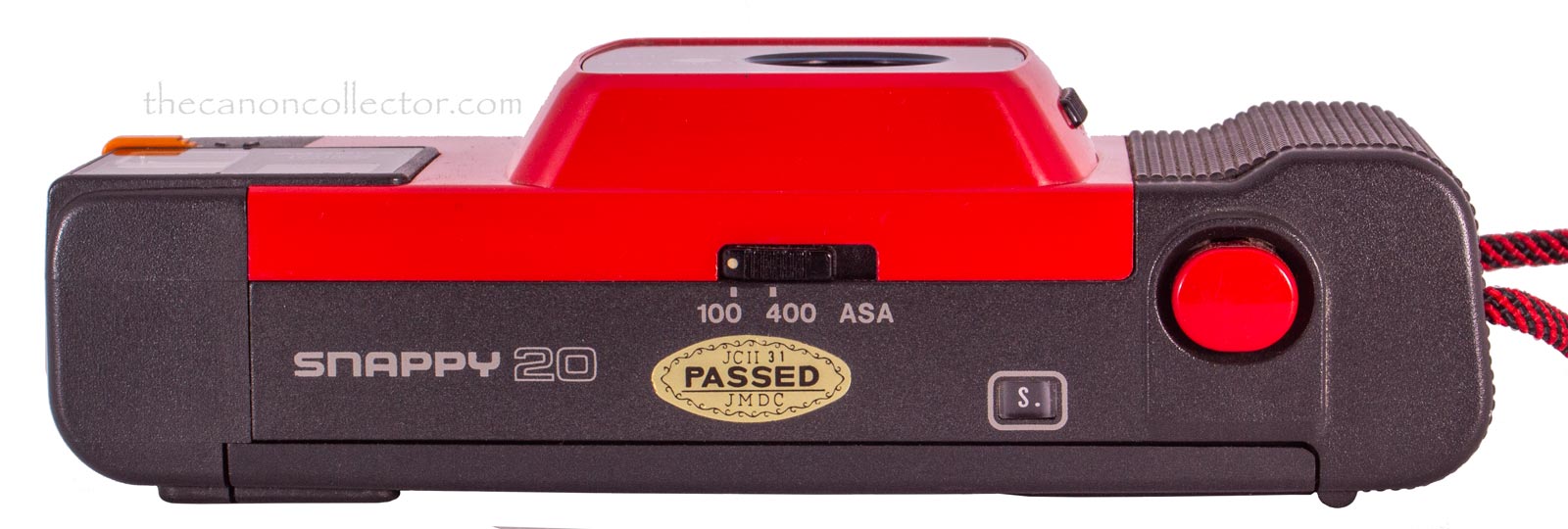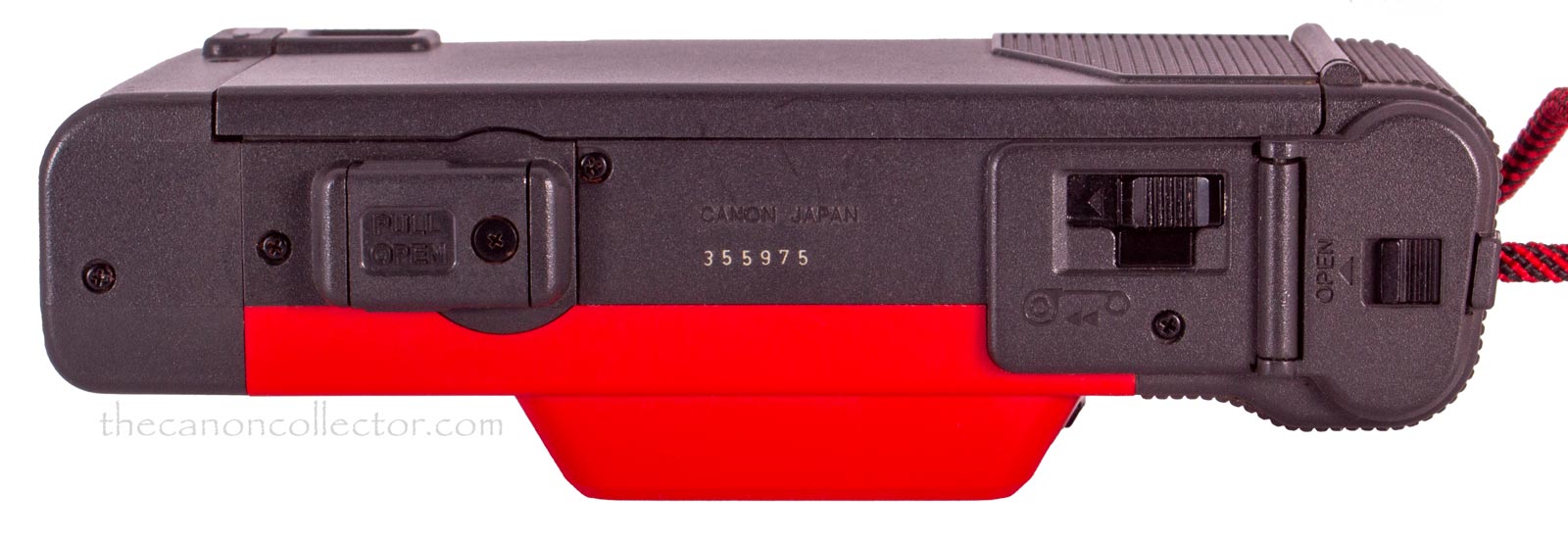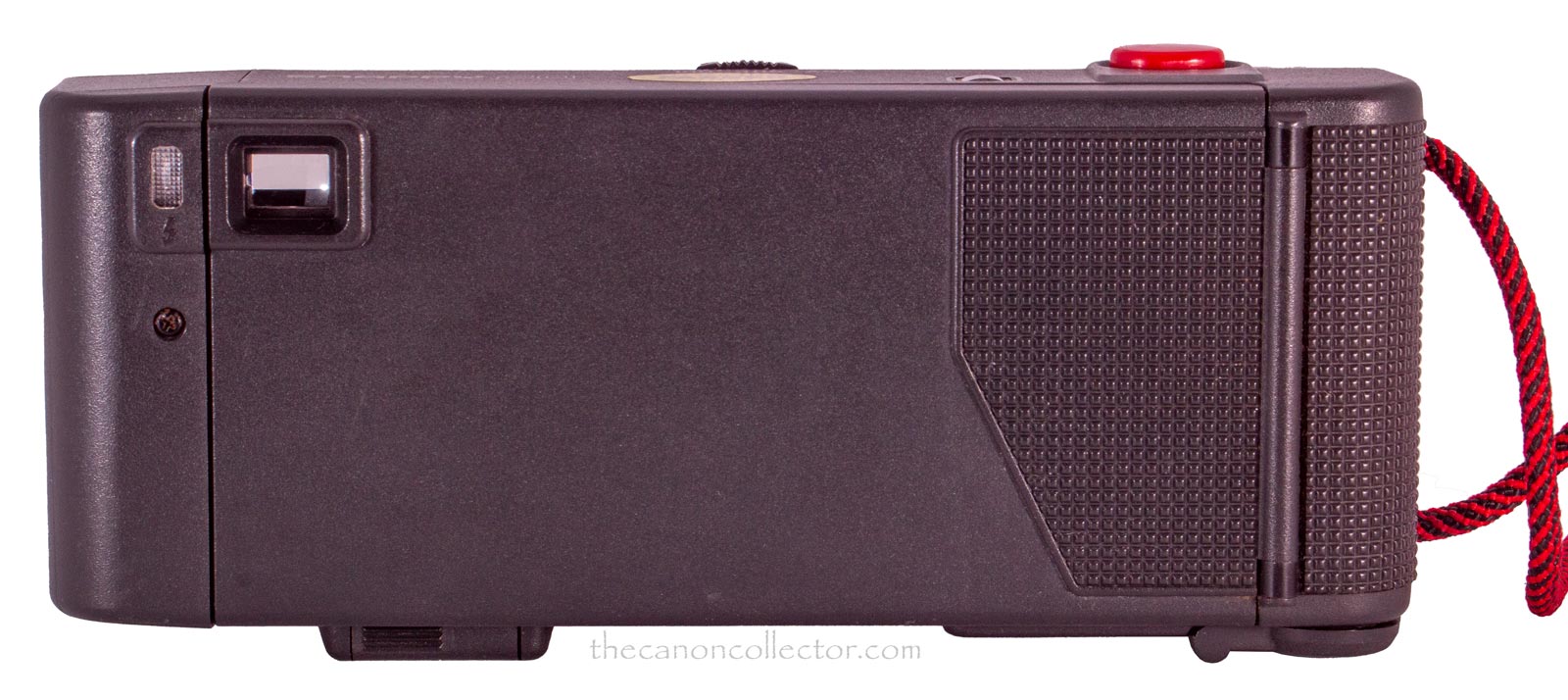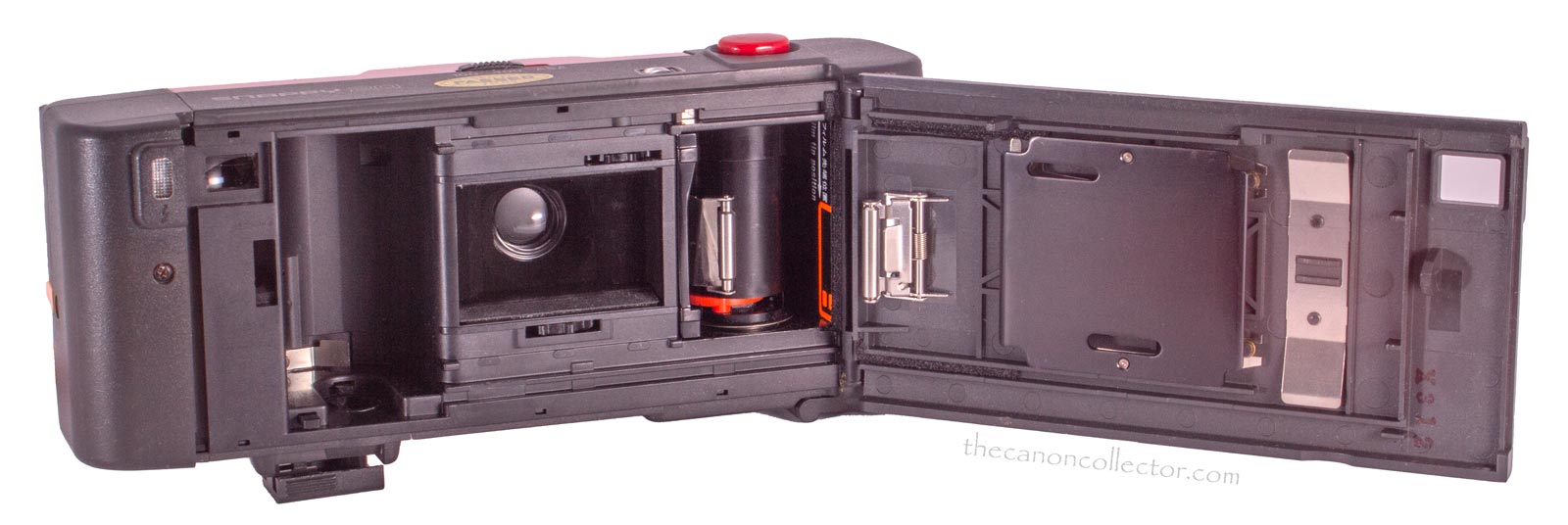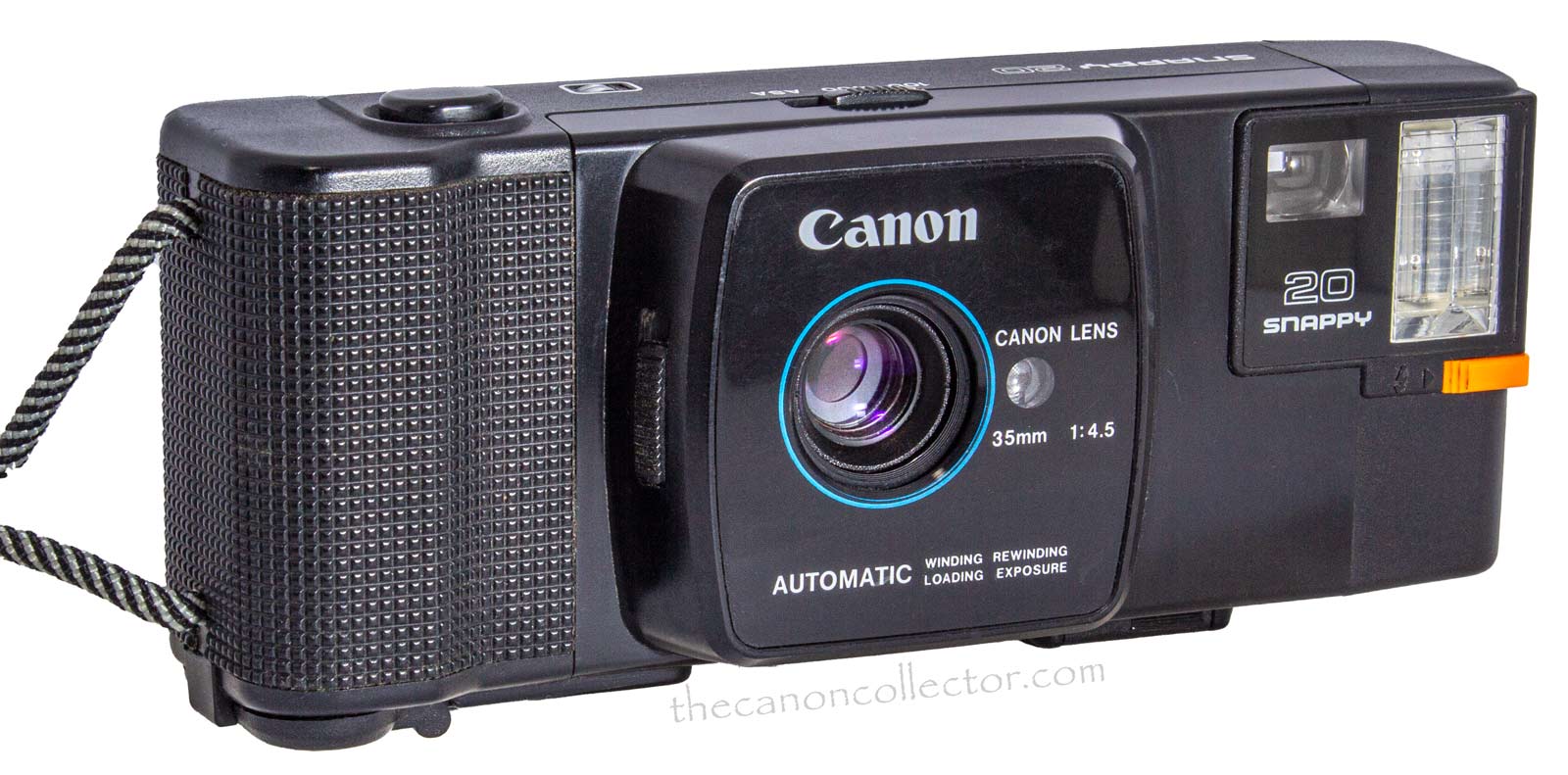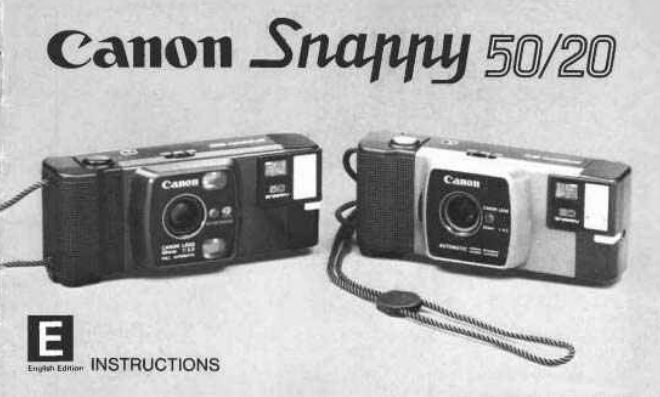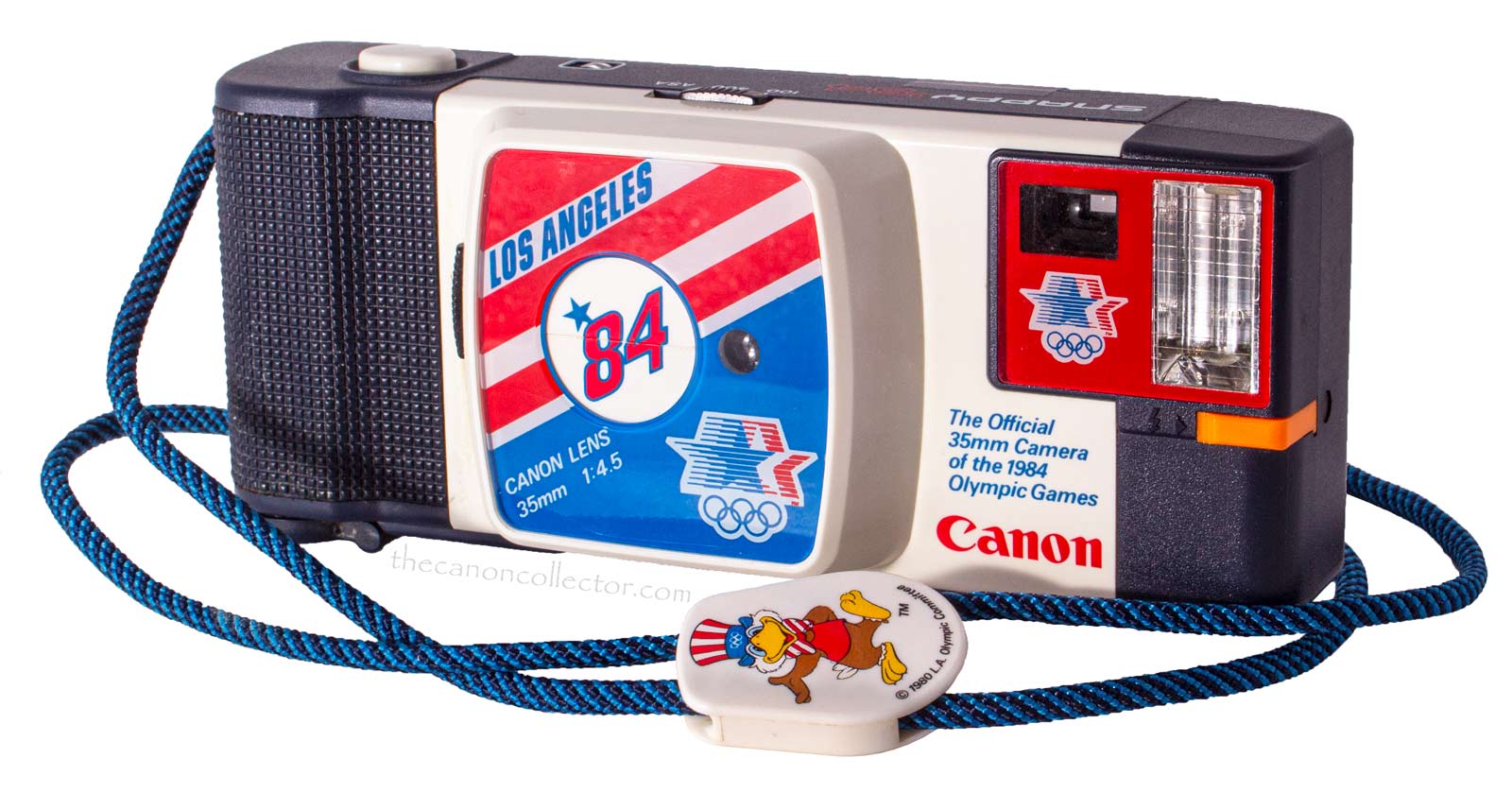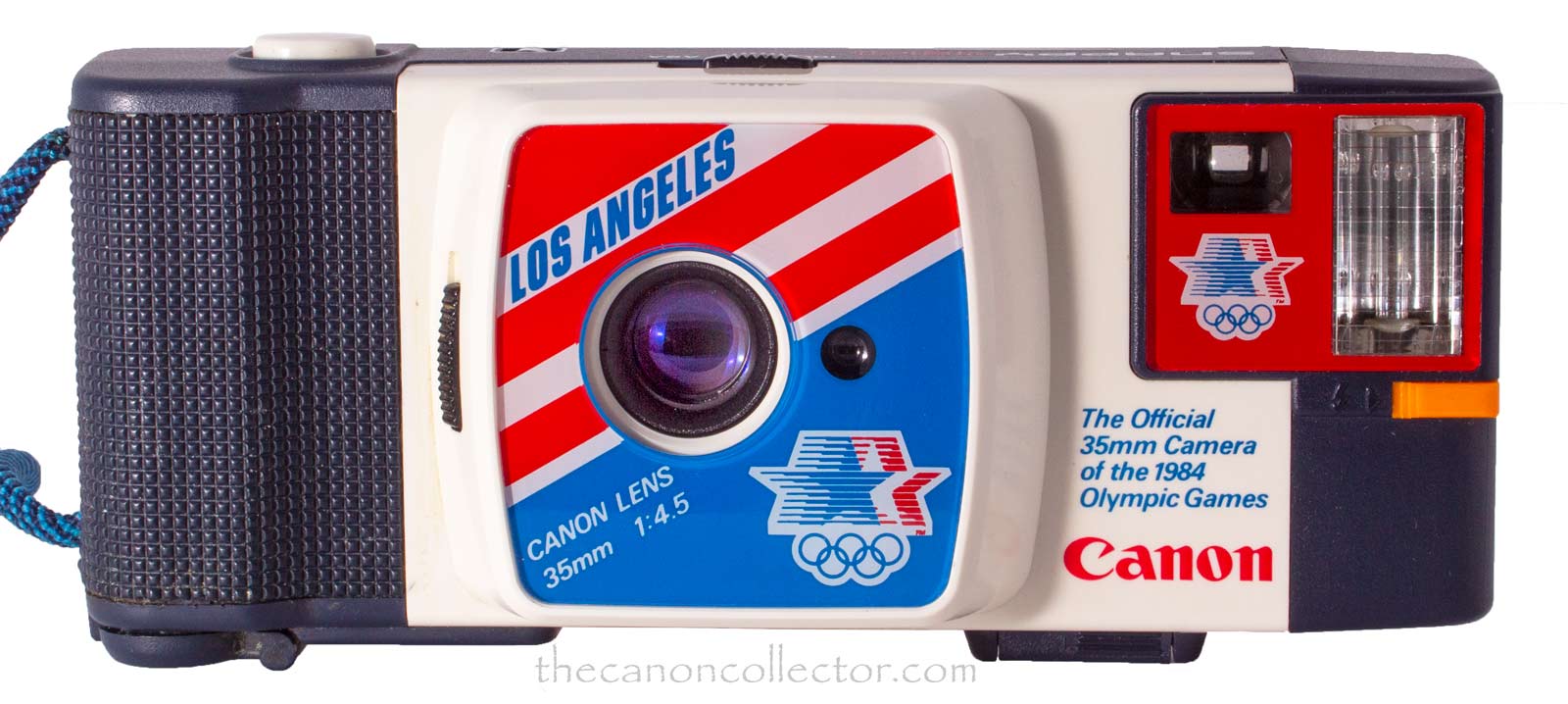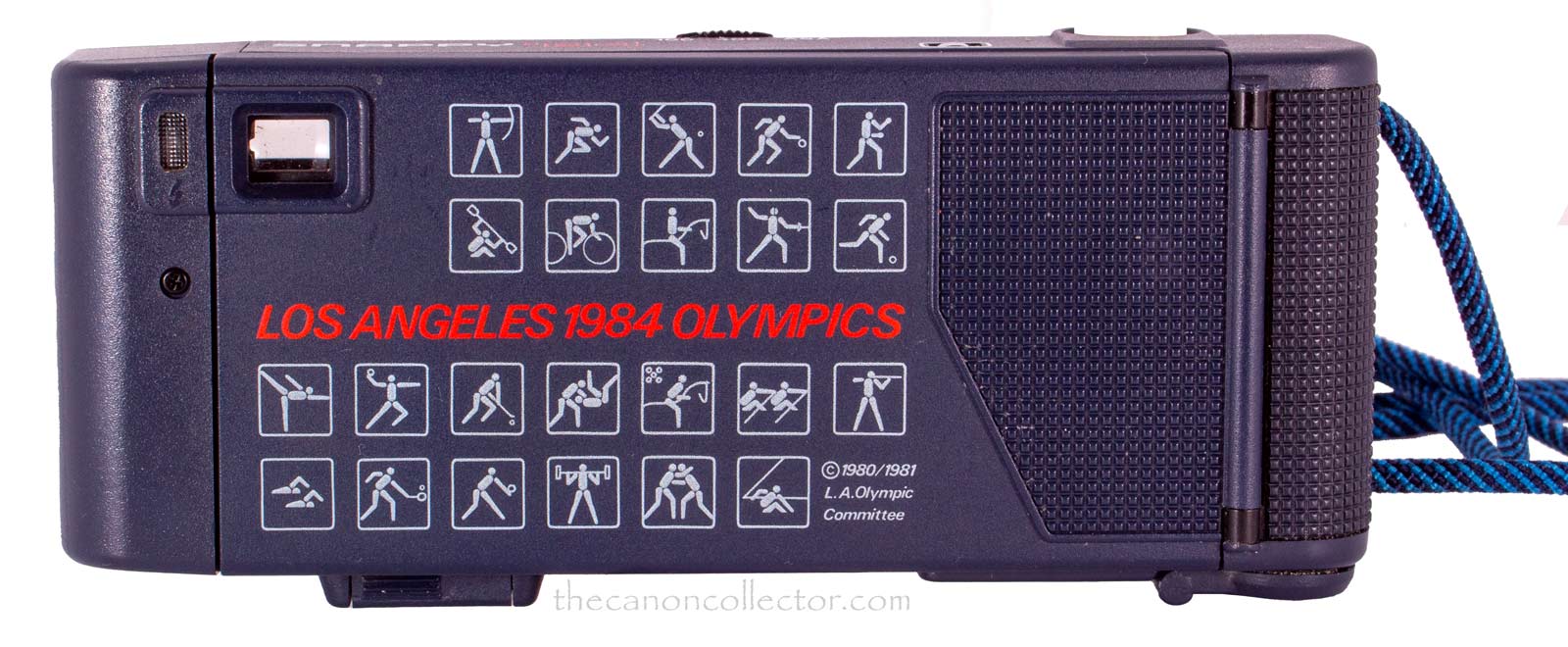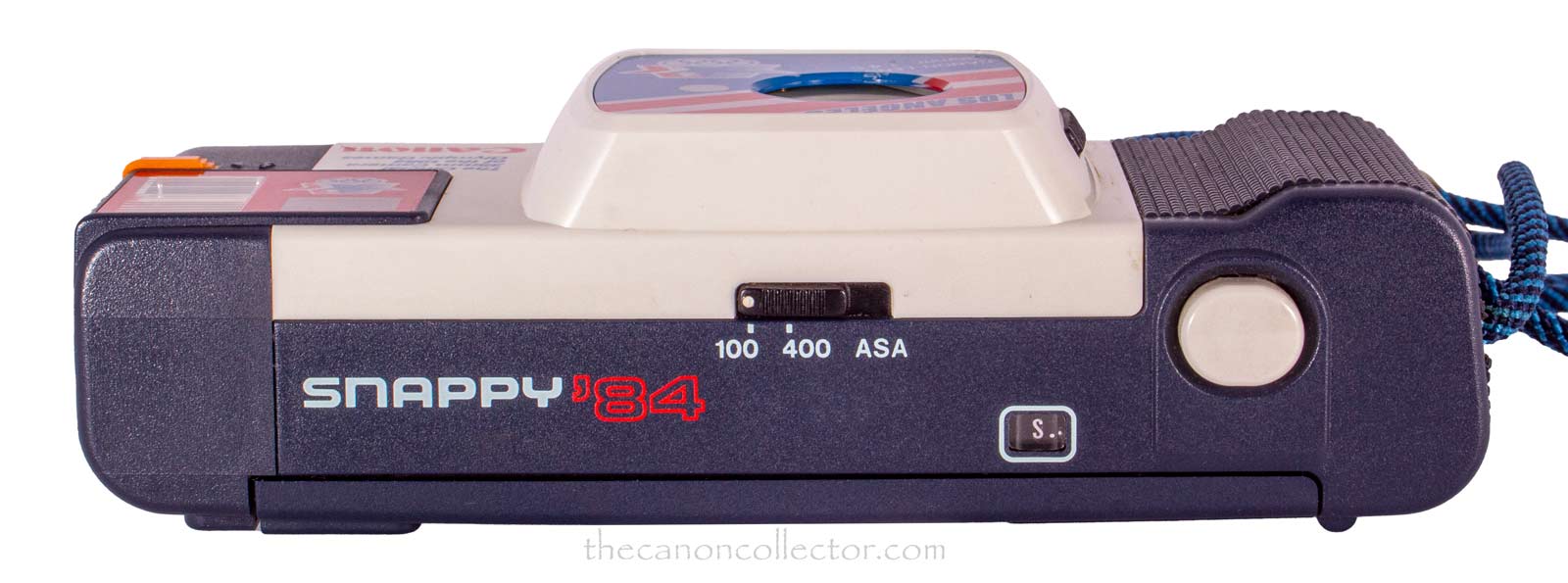The same camera with the Lens Cover closed.
The same camera with the Lens Cover open. To the right of the lens is the round opening for the CdS cell light meter.
The
Snappy 20
The Snappy 20 was the second in the Snappy line after the Snappy 50 which came out in the same year. The two cameras were basically the same camera but the Snappy 20 was a simpler less expensive model.
Introduced in September of 1982 the “20” was a fully automatic 35mm camera. There was no provision for manual operation except for the film speed which had to be set manually at either 100 or 400 ASA. Exposure was determined by a CdS cell. Film advance and rewind was motor driven.
The fixed focus lens was a 35mm f/4.5 lens of four elements in four groups. Shutter speeds were variable from 1/20th to 1/500th of a second. The shutter blades also functioned as the aperture blades.
We have a Newsletter
There is a Newsletter for thecanoncollector.com to keep you up to date on what we are posting. Try it!
The back of the camera has only the viewfinder in the top left corner. Note the lack of a film confirmation window.
The viewfinder is a reverse Galilean system and is actually not bad. There are no frame lines but the image is bright and clear.
The camera is powered by two AA cells and the manual cautions the user to only use alkaline batteries. I believe that probably has something to do with the electronic circuits taking the resistance of an alkaline battery into account. The camera will not work without batteries.
The neck strap is integral to the camera and is not removeable or replaceable by the user.
The shutter button has two stages, the first by pressing the button half way, and the second by continuing to press until the shutter releases. The trigger release is very soft and spongey. I don’t care for it but this is common with all very low end cameras.
To shoot you press the shutter half way. If the flash-ready lamp in the viewfinder begins to flash you know there is not enough light and you should turn on the flash.
After each shot the film advances automatically until you get to the end of the film at which point the camera will not fire. To rewind the film you must activate the rewind switch on the bottom of the camera.
It is a simple camera to operate and complete instructions can be found in the User Instructions.
There is a variation on the Snappy 20 we should discuss. The Summer Olympic Games were held in in Los Angles in 1984 and Canon managed to have the Snappy 20 designated as the “Official 35mm Camera of the 1984 Olympic Games”.
Nowhere on this camera does the name Snappy 20 appear although it is the same camera. On the top of the camera it says Snappy ’84. However this designation does not appear in the Canon Museum. So what do we call it? It is a Snappy 20 but Canon called it a Snappy ’84. I intend to call it the Snappy ’84 in the interests of clarity.
The back of the camera is distinctive as well with the symbols of the various sports at the ’84 Games.
My copy of the Snappy ’84 has not been well cared for in the past and the battery compartment has been corroded by battery acid (never leave batteries in a camera!). It looks fine on the shelf but it is not operable.
My Red and my Black Snappy 20’s appear to work but I have not taken them for a walk yet. So for a performance report you will have to wait.
This website is the work of R. Flynn Marr who is solely responsible for its contents which are subject to his claim of copyright. User Manuals, Brochures and Advertising Materials of Canon and other manufacturers available on this site are subject to the copyright claims and are the property of Canon and other manufacturers and they are offered here for personal use only.

